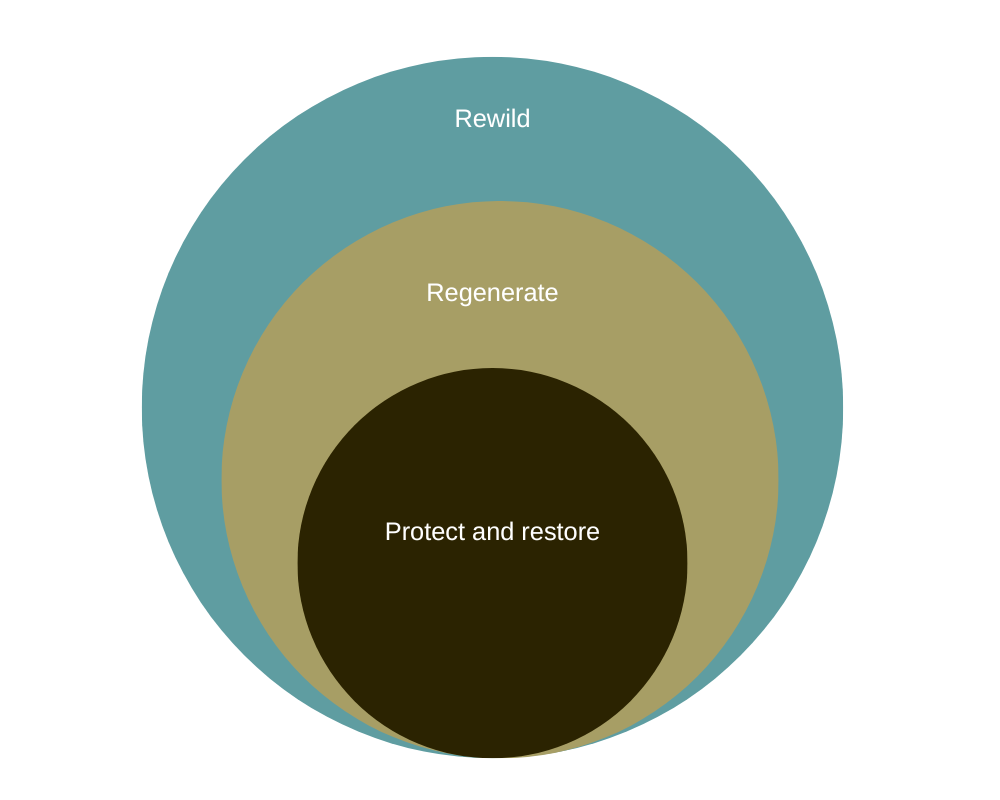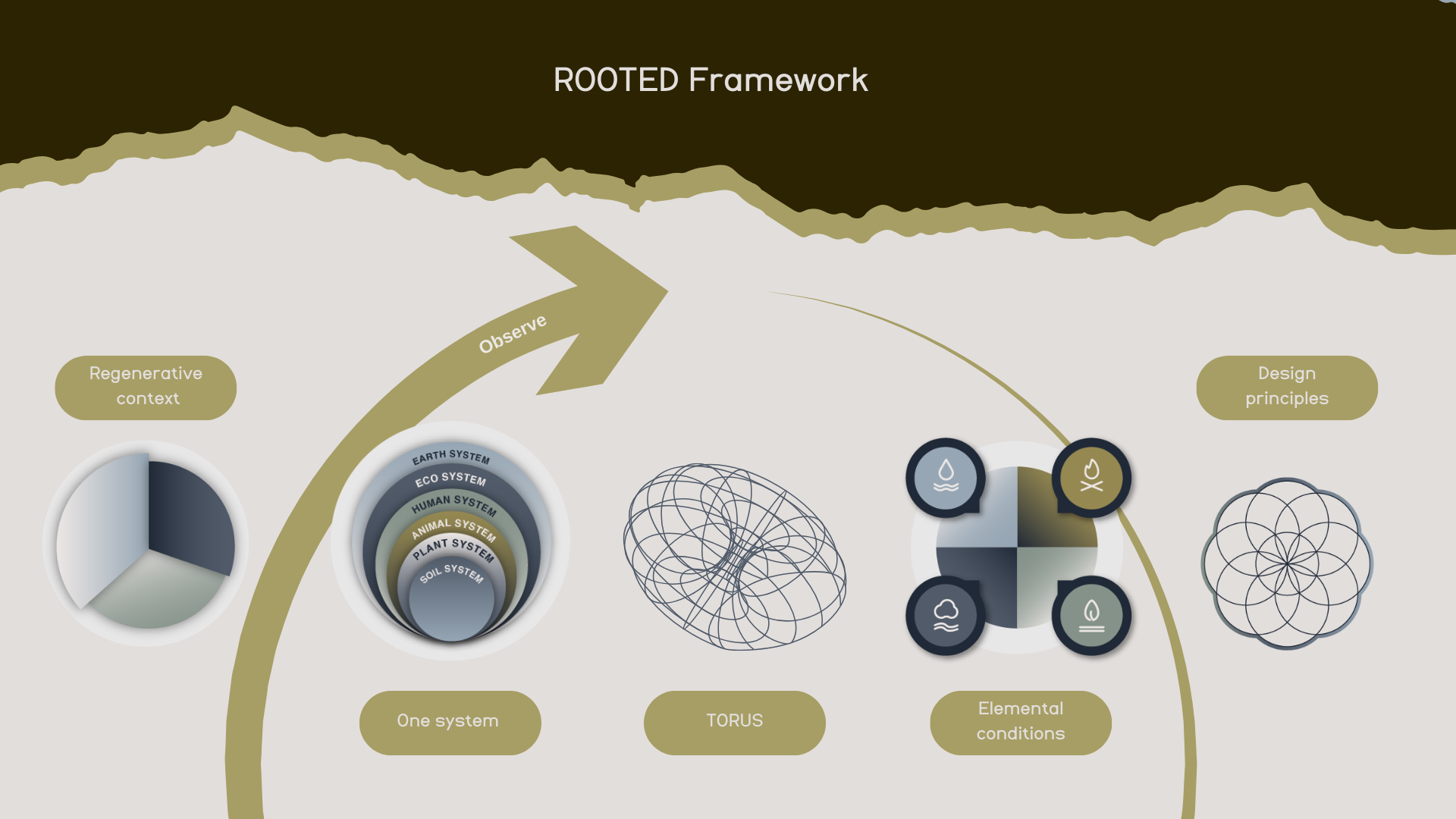
W Wilder systems.
The Wilderculture Approach specialises in upland, marginal land and Island contexts, where there is often a mixture of habitats, important cultural considerations, and challenging elemental conditions.
We call these ‘Wilder’ lands.
These ‘wilder’ lands generally have lower food production potential than lowland farms or estates.
Shifting baseline syndrome means many people are unaware of how downgraded these ecosystems have become, whether they are farmed or protected by conservation.
Records show that in the past, these Wilderlands were not only ecologically thriving but also supported many more families produced large numbers of livestock, and impressive bounties of game.
The Wilderculture Approach aims to restore higher levels of agroecological productivity through the regeneration of ecosystems that once more become complex, dynamic and buzzing with life.
I Integral
We take an integral approach to our work.
What does ‘Integral’ mean?
Integral – inclusive, embracing, whole, unified, comprehensive, full, complete. Integral theory is an approach to human beings and their world taken from the most comprehensive number of perspectives possible.
We use the ROOTED framework, an integral design framework that allows us to consider the importance and perspectives of all stages of human development and all parties related to a place.
By understanding how and why our landscapes were shaped by whom, we can value the important lessons learned and integrate them into an evolved plan that is fit for a future where humans can live in balance with the planet.


L Landscape Level
Our regenerative framework is designed for large-scale, upland, or marginal landscapes with a mosaic of habitats and small-scale agroecological farming systems that can collaborate to achieve landscape-scale changes.
Our ‘holarchy of regeneration’ allows us to consider a range of local and international ecological and cultural priorities and embed them within nested systems to achieve landscape-level impact.
The ultimate end goal of using this holarchy of regeneration is that we could – if everyone adopted this approach – end up with a healthy, ecologically functional UK landscape made up of a range of different farms, crofting townships and estates, each with a unique regenerative context.
Each farm/croft or estate will manage productive, regenerative agricultural operations and protect and restore internationally important habitats and species. It will be financially independent and operate its business in a way that suits the hardworking families involved.
These farms will also produce healthy, nutrient-dense foods to support healthy communities.
Not only will each farm become resilient and regenerative, but this approach will also ensure that nature will become connected at the landscape level with wilder corridors and areas of self-willed natural function.
Dynamic Whole System Function
Natural ecosystems can produce more biomass than our most intensive agricultural systems. They do this with zero inputs, powered only by sunshine, rainfall, and the life in the soil. This abundance occurs due to the interconnected, complex, and dynamic nature of the wild.
These systems are highly resilient and are a natural climate solution. They sequester carbon, cool the planet and can adapt more readily to climatic change and recover more quickly from extreme weather events. Complex webs of life balance out the effects of organisms that, in less complex systems, turn into pests and diseases.
The Wilderculture Approach aims to regenerate this whole system function to benefit nature and agroecological food production within the landscape.


E Engaged Landowners and Communities
At Wilderculture, we know that for management to be successful, all decision-makers need to be engaged in learning the principles of our approach, co-creating the plans, and making ongoing decisions. We, therefore, encourage a whole-team approach to management.
We also recognise that landscape-level management is rarely successful when conducted in isolation from the local community or relevant stakeholders. We encourage proactive communication and engagement to bring local people and organisations on board.
As part of our regenerative design framework, we encourage landowners to consider opportunities to support social and cultural regeneration by creating skilled jobs and providing secure land-based agroecological opportunities.
Wilderculture can also support developing plans for regenerative settlements in ‘wilder’ landscapes.
R – Resilient Social – Economic – Ecological systems
If land management is only focused on profits but degrades the very asset upon which it relies, then it will not be sustainable long term and will lose the support of the public.
If managers focus only on environmental outcomes, becoming reliant on environmental grants, tourism, or charitable donations for income, they are vulnerable to disruption and lack economic resilience.
If land management doesn’t fit the aims and passions of the owners and managers, then it is unlikely to be sustained.
In the Wilderculture Approach, we understand that regenerative management must balance social, environmental, and economic goals and provide resilience within all three if it is to succeed long term.


C – Cultural Heritage is Valued.
The debate about how we should manage our uplands is often heated and divisive, leading to a lack of progress toward their regeneration.
In the Wilderculture Approach, we consider a landscape’s cultural heritage to ensure we retain any features that are important to the owners and community or are integral to the sense of place.
Some traditional practices, however, have not been beneficial to our upland ecology. So, rather than using our cultural heritage as an excuse to carry on with ‘business as usual,’ we use regenerative design principles to reimagine a more balanced and ecologically regenerative version of traditional activities and landscape states.
U – Upland ownership is decentralised
At Wilderculture, we believe that the large-scale purchase of land by organisations with a narrow management agenda could lead to a form of ecological colonialism. Wilderculture, therefore, aims to influence rather than own.
It’s our belief that a broad mix of ownership is a good thing because diversity is not only essential to ecology but also to human society. Each unique context, working with ecological, economic and socially regenerative management plans, is the best way to create a complex, resilient, and dynamic landscape and communities.


L – Landowners as keystone species
We fully understand the role and value of keystone species and support re-instructions of missing species as a way of kick-starting natural processes where the context allows, and there is full community support. In many parts of the world, however – especially the UK – this is unlikely to happen in the near future.
Our ecosystems are highly modified and will not simply reset to functional pristine wild landscapes with the re-introduction of one or two missing species.
We believe that humans are part of nature and, if trained in ecological literacy and holistic decision-making, can have a highly influential positive role in rebuilding dynamic whole system function.
T – Think like an ecosystem
Many of today’s so-called ‘wicked’ problems stem from having assumed that nature works like a machine and managing it as such. Living systems, however, are complex and dynamic – the whole is greater than the sum of its parts. Each part can only be understood in reference to the whole.
Managing living systems requires a different worldview and way of thinking – systems thinking. In the Wilderculture approach, we use the ROOTED framework to help managers develop the capacity to think like an ecosystem in non-linear ways that allow for positive emergent outcomes.


U – Unify food production and nature conservation
In modern land management, so often, nature is on one side of the fence, with food production on the other. It is assumed that if we produce food from the land, then nature must be compromised.
Equally, it is assumed that to manage for nature is best done without humans or livestock present.
We believe this need not be the case. In an integrated regenerative system, nature can function better when systems-thinking land managers are adaptively acting on carefully considered plans designed using living systems principles.
Conversely, food production is more resilient, nutrient dense and productive over the longer term in agroecological systems with high levels of ecological whole-system function.
R – Regenerative design principles
Successfully managing complex living systems like landscapes, farms, and communities requires a different approach from the command-and-control, one-size-fits-all mechanistic management that has become normal in farming and conservation.
It provides a toolbox and process for regenerating complex systems. It allows us to see the farm as a series of nested systems so we can apply regenerative design principles to create bespoke plans that balance ecological, economic, and social goals unique to people and place.
Regenerate means to ‘restore and renew’ and is a big step beyond simply sustaining a downgraded resource. The ROOTED framework ensures that management regenerates the land’s elemental conditions in ways that optimise complex self-regulating living systems.


E – Enhance elemental conditions
In Wilderculture, we believe that abiotic factors are not beyond our control. Through active management, we can optimise abiotic and biotic interactions to improve the quality and quantity of primary production in ways that benefit both wildlife and food production.
We enhance the elemental conditions to create favourable conditions for complex and dynamic living systems to thrive.
Through regenerative design and careful application of regenerative management practices, we can;
Earth – build soil, improve fertility and optimise pH.
Water – slow the flow of rainfall through the ecosystem, making all available rainfall effective for growth. Hydrating landscapes positively influence rainfall patterns and climate function.
Air: Slow the velocity of wind, reduce exposure to extreme temperatures, and promote healthy, covered structured soils that can sequester carbon and fix nitrogen from the atmosphere.
Fire: Increase carbon fixation via photosynthesis to increase the flow of energy available to all life and maximise the primary production of landscapes.

